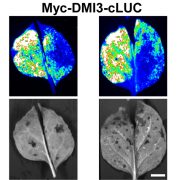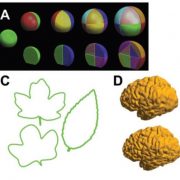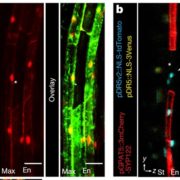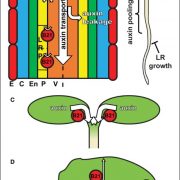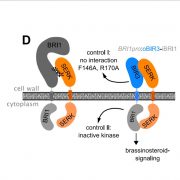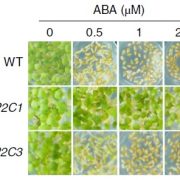Lateral root priming synergistically arises from root growth and auxin transport dynamics (bioRxiv)
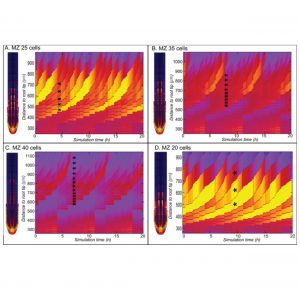 Root system architecture is primarily determined by branching of the lateral roots. The position of a new lateral root is determined by oscillating auxin concentrations in the main root meristem. To understand the nature of auxin oscillations Van den Berg and ten Tusscher developed a multiscale root model integrating realistic root tip architecture, auxin reflux from the lateral root cap, and cell growth dynamics. In elongating vascular cells, the surface occupied by polar auxin efflux proteins (PINs) decreases relative to non-polar auxin uptake, creating a high auxin uptake zone that is fed by auxin reflux from lateral root cap cells. Together with small differences in the size of cells produced by the meristem, this efffect is sufficient to create regular auxin oscillations. According to the model, meristem size has a negative effect on the density of oscillations and thus the frequency of primed sites. The new model suggests that the reduction in main root growth and increase in lateral root density, as observed under phosphate starvation, can be explained by one and the same change in root dynamics. (Summary by Magdalena Julkowska) bioRxiv 10.1101/361709
Root system architecture is primarily determined by branching of the lateral roots. The position of a new lateral root is determined by oscillating auxin concentrations in the main root meristem. To understand the nature of auxin oscillations Van den Berg and ten Tusscher developed a multiscale root model integrating realistic root tip architecture, auxin reflux from the lateral root cap, and cell growth dynamics. In elongating vascular cells, the surface occupied by polar auxin efflux proteins (PINs) decreases relative to non-polar auxin uptake, creating a high auxin uptake zone that is fed by auxin reflux from lateral root cap cells. Together with small differences in the size of cells produced by the meristem, this efffect is sufficient to create regular auxin oscillations. According to the model, meristem size has a negative effect on the density of oscillations and thus the frequency of primed sites. The new model suggests that the reduction in main root growth and increase in lateral root density, as observed under phosphate starvation, can be explained by one and the same change in root dynamics. (Summary by Magdalena Julkowska) bioRxiv 10.1101/361709



